The product is available in tablet form (regular and chewable tablets), as well as in the form of a solution for injection. Sold in packages and ampoules. One tablet of Calcium Gluconate, which helps with insufficient Ca content in the diet, contains 250 or 500 mg of the active substance.
The concentration of the active substance in 1 ml of solution is 95.5 mg. As auxiliary components, the composition of the solution includes calcium sucrose and water for injection.
Pharmacological properties
Calcium gluconate - what is it? Calcium is an essential macronutrient that is involved in the formation of bone tissue, the transmission of nerve impulses, and blood clotting. This macronutrient is also necessary to maintain normal cardiac activity.
In addition, calcium improves muscle contraction in muscle dystrophy and myasthenia gravis, and also reduces vascular permeability. When administered intravenously, the drug exhibits a moderate diuretic effect, and also enhances the release of adrenaline by the adrenal glands and causes excitation of the sympathetic nervous system.
The use of the drug has a less irritating effect than calcium chloride.
Injections, tablets Calcium gluconate: what does the medicine help with
- hyperphosphatemia in patients with chronic renal failure;
- Ca metabolic disorders in the postmenopausal period;
- hypoparathyroidism;
- poisoning with oxalic acid, Mg salts, soluble salts of fluoric acid;
- long-term treatment with diuretics, corticosteroids or antiepileptic drugs;
- rickets;
- osteoporosis;
- increased need for Ca (during pregnancy, breastfeeding, intensive growth of children);
- latent tetany;
- bone fractures;
- osteomalacia;
- insufficient content of Ca in the diet;
- disorders of vitamin D metabolism;
- conditions that are accompanied by increased excretion of Ca, chronic diarrhea, prolonged bed rest;
- spasmophilia.
As an addition to the main treatment, calcium gluconate tablets are used as an allergy remedy for:
- parenchymal hepatitis;
- itchy dermatoses;
- toxic liver damage;
- febrile syndrome;
- bronchial asthma;
- jade;
- angioedema;
- with bleeding of various origins;
- alimentary dystrophy;
- eclampsia;
- serum sickness;
- urticaria;
- pulmonary tuberculosis.
What do calcium gluconate injections help with?
In ampoules, the drug is prescribed for certain pathologies of the parathyroid glands, conditions that are accompanied by increased excretion of Ca from the body, as an adjuvant for allergies, as well as for allergic complications of treatment with other drugs.
The drug is used to reduce vascular permeability in various pathological processes, with nephritis, eclampsia, liver intoxication, hyperkalemia, parenchymal hepatitis, hyperkalemic form of periodic paralysis (paroxysmal myoplegia), as a hemostatic agent.
Indications for the introduction of the drug intravenously or intramuscularly are also poisoning with soluble salts of fluoric acid, oxalic acid or Mg salts, with skin diseases (psoriasis, itching, eczema).
Contraindications
The instruction prohibits the use of calcium gluconate in the presence of the following diseases or disorders:
- hypercalcemia;
- tendency to thrombosis;
- hypercoagulation;
- severe atherosclerosis.
In addition, the drug is not prescribed for severe renal failure. In patients with impaired renal function of slight severity, as well as with a history of urolithiasis or with slight hypercalciuria, the drug should be used with caution.
Those patients who have a tendency to form stones in the urine, during the period of treatment with calcium preparations, it is necessary to increase the amount of fluid consumed. Children are not recommended to do intramuscular injections.
Medicine Calcium gluconate: instructions for use
Pills
Take before meals, after crushing or chewing. A single dose for patients over 14 years old is from 1 to 3 g (2-6 tablets for each dose). Patients 3-14 years old are given 2-4 tablets. 2-3 rubles / day
Treatment lasts from 10 days to 1 month. The duration of the course is determined by the attending physician individually, depending on the patient's condition. The permissible upper limit of the daily dose for elderly patients is 4 tab. (2 g).
Instructions for use Calcium gluconate in injections
It is administered intravenously or intramuscularly. Patients over 14 years old are given 1 r./day. A single dose is from 5 to 10 ml of solution. Injections, depending on the condition of the patient, are allowed to be done daily, every other day or once every two days.
For children from birth to 14 years of age, the dose of a 10% intravenous calcium gluconate solution varies from 0.1 to 5 ml. Before administration, the drug should be warmed to body temperature. The drug should be administered slowly - within 2-3 minutes.
For the introduction of less than one milliliter of solution, a single dose is recommended to be diluted to the desired volume (syringe volume) with a 5% glucose solution or a 0.9% NaCl solution.
Carrying out autohemotherapy
10 ml of calcium gluconate solution is injected into the patient's vein, and then blood is immediately taken from the vein and transferred back as a subcutaneous injection or injection into the gluteal muscle.
Side effects
The agent for internal use can cause irritation of the gastrointestinal mucosa, constipation. With the introduction of the solution intramuscularly, intravenously, diarrhea, vomiting, bradycardia, nausea may occur. Also, with intravenous administration, there may be:
- general feeling of heat;
- fainting;
- decrease in pressure with rapid administration;
- burning sensation in the mouth;
- arrhythmia;
- heart failure.
With intramuscular injections of calcium gluconate, tissue necrosis may occur at the injection site. An overdose causes the development of hypercalcemia, to eliminate which calcitonin is administered - 5-10 IU per kilogram of body weight per day.
Calcium gluconate for allergies
Calcium gluconate is used in combination with antihistamines. The remedy is prescribed, among other things, to eliminate side effects caused by taking other medications.
Doctors have proven that one of the causes of allergies can be a pronounced deficiency of Ca in the body. It is with its deficiency that most allergic reactions in children are associated: the children's body grows very intensively, as a result, the Ca content in all its tissues decreases.
Tablets are taken orally before meals. The dose depends on the characteristics of the disease and the age of the patient.
In addition, in some cases, the patient may be prescribed an intravenous solution. Calcium gluconate in case of allergy intramuscularly or subcutaneously is not recommended (especially for children).
The course of treatment for allergies usually ranges from 7 to 14 days.
drug interaction
The simultaneous use of calcium preparations with calcium channel blockers reduces the pharmacological effect of the latter. With a combination of oral forms of calcium gluconate and tetracyclines, there is a violation of the absorption of tetracycline drugs, and therefore their pharmacological effect is reduced.
Colestyramine reduces the absorption of calcium from the gastrointestinal tract. Quinidine in combination with calcium slows down intraventricular conduction. In addition, as a result of this combination of drugs, the toxicity of quinidine increases.
With intravenous administration of calcium before or after the use of Verapamil, the hypotensive effect of the drug decreases. Parenteral use of calcium preparations is also not recommended during the period of treatment with cardiac glycosides, since this combination of drugs leads to an increase in the cardiotoxic effect.
Analogues
- B. Brown.
- Calcium gluconate-Vial.
- Glycerophosphate granules.
- Calcium-Sandoz.
- Additive calcium.
- Hydroxyapatite.
- Calcium pangamat.
- calcium lactate.
- CalViv.
- LekT.
Can calcium gluconate be given to children?
The most common indications for the use of the drug in pediatrics are conditions caused by insufficient intake of calcium into the body with food, as well as conditions that are caused by impaired absorption of calcium in the intestine.
The development of hypocalcemia, along with a reduced content of calcium in food, is also promoted by hypovitaminosis D. In addition, certain diseases of the parathyroid glands and the thyroid gland can also become the cause of hypocalcemia.
Why is calcium gluconate prescribed for children yet?
In addition to these diseases and rickets, indications for prescribing the drug for children are allergic diseases (acute or chronic), skin diseases, pathologies manifested by blood clotting disorders, physiological conditions that are accompanied by an increase in the child's need for calcium.
How to take calcium gluconate correctly?
Children are advised to dose calcium gluconate depending on age. In the first 12 months of a child's life, the standards for daily Ca intake range from 0.21 to 0.27 g. Children under 3 years old need 0.5 g of Ca per day, children 4-8 years old - 0.8 g, children over eight years old - 1-1.3 g.
Tablets for children under 12 months are given 3 per day (1.5 g), for children under 4 years old - 6 per day (3 g), for children under 9 years old - depending on the severity of Ca deficiency and the characteristics of the clinical situation - 6-12 per day. day (3-6 g), children under 14 years old - 12-18 per day (6-9 g).
The daily dose is divided into 2-4 doses.
In / in children, the drug is usually administered as an emergency remedy: for bleeding, convulsions, acute allergic reactions. Subcutaneously and intramuscularly, the solution is not administered to children. In the muscle, the medicine can only be administered to adult patients!
Calcium gluconate during pregnancy and lactation
During pregnancy and during breastfeeding, the use of the drug is possible, taking into account the ratio of benefit to the mother / risk to the fetus (child). To say exactly whether it is possible for pregnant women to take Calcium Gluconate in each case, only the attending physician can. When taking the drug during lactation, it may pass into milk.
Price
In Moscow, St. Petersburg and other cities of Russia, calcium gluconate tablets can be bought at a price of 4 rubles, ampoules - 109 rubles. In Kyiv, its cost reaches 3-4 hryvnia. In Minsk, you can buy injections for 2-7.5 rubles. The price in Kazakhstan is 40 tenge.
Reviews
The most common reviews about the drug Calcium Gluconate are reviews for allergies. The remedy is prescribed for both adults and very young children. At the same time, most people consider it a worthy alternative to more expensive and advertised drugs.
To compensate for calcium deficiency, tablets are usually prescribed, but in some situations the drug is administered intravenously or into the muscle.
Reviews of calcium gluconate injections intramuscularly allow us to conclude that the procedure is quite painful. Moreover, discomfort usually occurs not during the injection, but after it.
About Calcium gluconate intramuscularly, reviews indicate that intravenous injections are tolerated somewhat more easily than injections into the muscle. However, it should be remembered that the injection is “hot”, and after it you should not get up abruptly.
However, do not forget that the drug is a medical product, so only a doctor can recommend treatment for them.
“You need to drink pills and eat with them at least 2-3 slices of tangerine or orange, in short citrus fruits. Since calcium is better absorbed when taking vitamin C. I started my course of treatment and already in the second week the result became noticeable, the nails stopped exfoliating and broke much less, hair stopped falling out and falling out, a lively shine appeared.
"It's even better not to swallow calcium gluconate, but to put the pill under the tongue and slowly dissolve it !!! Then it is absorbed much better and really - a good result for a penny."
"The child turned out to be allergic to cow's milk (cow protein). Well, we found out later, but at first there were various drugs. The doctor at the very beginning prescribed calcium gluconate tablets for us. After all, these tablets are able to remove toxic substances from the body."
"Ingestion should not be carried away - calcium is deposited in the body."
remedy.ucoz.ru
Calcium gluconate - what is it
Before using the medication, it is useful to familiarize yourself with what calcium gluconate is. As a chemical substance, it is a white crystalline or granular powder, tasteless and odorless, with the chemical formula salt of gluconic acid. Its pharmacological action is reduced to replenish calcium deficiency. Also, the properties of the drug include anti-allergic, detoxifying and hemostatic effects. The drug is used for anti-inflammatory purposes, to increase permeability and reduce vascular fragility.
As part of 9% is calcium, which affects the corresponding metabolism in the body. Ions of the substance are needed for the transmission of impulses between nerve cells, contraction of skeletal and smooth muscles and myocardium. They are involved in the process of blood coagulation, formation and preservation of bone tissue. The drug compensates for the deficiency of ions, its action is milder and non-irritating than chloride.
Calcium tablets
The first form of release are calcium gluconate tablets, which are white flat-cylindrical in color and shape. 1 tablet contains 500 mg of the active substance, auxiliary in it is starch, talc and calcium stearate. Available in packs of 10 and 20 pieces, differ in price. They are prescribed for children, they have no taste, they are easily swallowed.
Calcium gluconate in ampoules
Injection solution of Calcium Gluconate is intended for intravenous or intramuscular administration. Outwardly, it is a colorless transparent liquid in 5 or 10 ml ampoules. It is used to normalize the work of the human body, restore the function of calcium metabolism. The drug affects the heart, the transmission of nerve impulses. Recommended for use by adults.
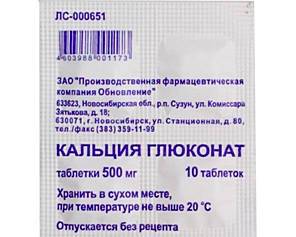
Injections of calcium gluconate
The drug can be administered by intravenous or intramuscular injections. In the first case, the procedure is carried out in a therapy room, the second option is suitable for home conditions. The indications for injections are a violation of the transmission of nerve impulses, the work of the myocardium and contraction of the heart muscles. Relieve injections from colds, allergies, internal bleeding.
Calcium Gluconate intravenously - why
For certain pathologies of the thyroid gland, calcium gluconate is prescribed intravenously. Indication for use is allergy, nephritis, liver intoxication. Injections into a vein are prescribed for vascular permeability, hepatitis, myoplegia and serve as a hemostatic agent. The doctor prescribes intravenous injections for poisoning, psoriasis, itching and eczema.
Relieves gluconate from skin diseases, boils, chronic colds and diabetes. Rheumatism and recovery after operations or long-term illnesses require the introduction of 10 ml of the drug into a vein, after which the blood is taken and given a subcutaneous injection or injection into the gluteal muscle. Children are shown only intravenous administration, because intramuscular injection can cause the formation of tissue necrosis.
Calcium gluconate injections intramuscularly
If pills are not available, then calcium gluconate is administered intramuscularly. For the procedure, the gluteal muscle is used as the softest, there is the least pain after the injection. The advantages of intramuscular administration include painlessness, the absence of bumps and bruises, rapid action and penetration into the blood. Contraindications are kidney failure, failure of the heart and lungs, excess calcium in the body.

Calcium gluconate - indications for use
Common factors for which Calcium Gluconate can be used are the following diseases and dysfunctions:
- hypocalcemia;
- increased permeability of cell membranes;
- disturbances in the work of nerve impulses of muscle tissue;
- hypoparathyroidism, osteoporosis, tetany;
- disorders of vitamin D metabolism - rickets;
- increased need for calcium - in pregnant women, during lactation, during postmenopause, for adolescents in the phase of active growth;
- calcium deficiency in the diet;
- bone fractures, chronic diarrhea, prolonged bed rest or treatment with diuretics, anti-epileptic drugs;
- teething;
- colds, runny nose, bronchitis;
- poisoning with oxalic acid, magnesium salts, salts of fluoric acid - during chemical activity.
As an addition to complex therapy, tablets and injections are used:
- with allergies and itchy dermatosis, atopic dermatitis;
- for the treatment of febrile syndrome, urticaria, serum sickness;
- to stop bleeding, including in gynecology;
- to alleviate dystrophy, bronchial asthma, pulmonary tuberculosis, hepatitis, nephritis;
- when removing toxins from the liver.

Calcium gluconate for allergies
Doctors have proven that calcium gluconate from allergies can help if the cause of the reaction is a lack of ions of the substance. The drug is prescribed for adults and children, combined with taking antihistamines. Tablets are taken before meals, washed down with water. The dose is prescribed individually, the course is from 1 to 2 weeks. In severe cases, intravenous injections are indicated.
Calcium gluconate for colds
Dr. Komarovsky claims that calcium gluconate is necessary for children with a cold, because due to a deficiency of calcium ions, the child catches a cold. To increase the body's resistance, he is given pills or intravenous injections are prescribed. In addition to getting rid of a cold, indications for taking a substance by a child are rickets, thyroid diseases, allergies and skin diseases. According to reviews, it is useful to take the medicine during active growth.
Calcium gluconate - instructions for use
As with any drug, the instructions for using Calcium Gluconate contain a lot of useful information. According to the annotation, the drug is rapidly absorbed by the intestines, penetrating into the blood and taking an ionized and bound state. Ionized calcium remains the most physiologically active, it enters the bone tissue. It is excreted from the body with urine and feces.
You should carefully monitor the implementation of the dose prescribed by the doctor so that an overdose does not occur. It leads to hypercalcemia, for which calcitonin is the antidote. According to the instructions, the drug is not compatible with carbonates, salicylates and sulfates. Particular care should be taken in patients with hypercalciuria, reduced filtration work in the glomeruli. To prevent nephrourolithiasis, drinking plenty of water is recommended along with the intake.
How to drink calcium gluconate tablets
After prescribing the remedy, the question naturally arises of how to take Calcium Gluconate. Inexpensive tablets are taken before meals or 60-90 minutes after it, washed down with milk and chewed. Adults are prescribed up to 9 g per day, divided into 3 doses. Up to a year, the baby takes 0.5 g, up to 4 years - 1 g, then every 2 years the dose is increased by 0.5 g. Reception by children is carried out 2-3 times a day. During pregnancy and breastfeeding, women take no more than 9 g per day. Treatment lasts 10-30 days. Permissible daily dosage for elderly patients - 2 g.
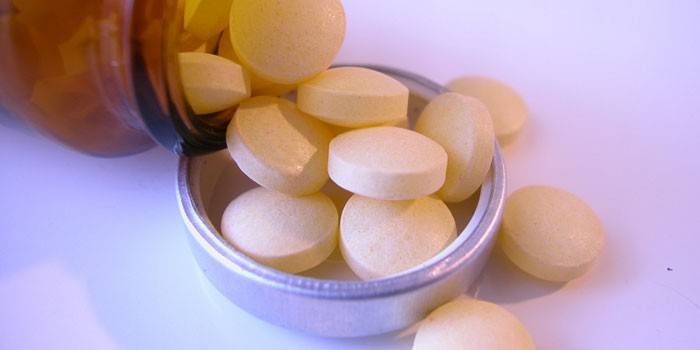
How to inject calcium gluconate
Injections of the drug are called hot injections, but not because they, like chloride, give a feeling of warmth or burning, but because of the introduction of a heated solution to body temperature. Over 14 years old, it is permissible to use 5-10 ml per day, administered at a time. The patient's condition affects the frequency of injections - every day, 2 days or every other day. Up to 14 years of age, you can enter a 10% solution up to 5 ml.
The drug is injected slowly - up to 3 minutes, sometimes the drip method is used. For intravenous injection, a clean syringe is used, cleaned of ethyl alcohol residues. Children are allowed to inject the drug only into a vein, because intramuscular use will lead to tissue necrosis, which, according to reviews, will take a long time to heal and leave discomfort on the body.
Calcium gluconate side effects
Doctors note the following side effects of the drug:
- irritation of the gastrointestinal tract, constipation when used internally;
- when administered intramuscularly or intravenously, diarrhea, vomiting, nausea are possible;
- bradycardia, burning of the mouth, fever;
- quick injections cause a decrease in pressure, arrhythmia, cardiac arrest or fainting;
- intramuscular injection can cause tissue necrosis;
- an overdose is dangerous with an excess of ions.
Contraindications Calcium gluconate
There are the following contraindications of Calcium Gluconate, which become a source of impossible use of the remedy:
- hypercalcemia, hypercalciuria, hypersensitivity;
- nephrourolithiasis, sarcoidosis;
- to avoid the risk of arrhythmia, you can not combine the drug with cardiac glycosides;
- according to reviews, it can be used with caution for dehydration, diarrhea, atherosclerosis, electrolyte disturbances;
- You can not combine the drug with alcohol.
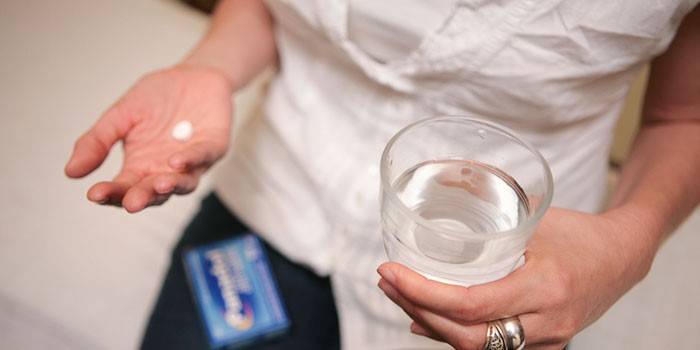
Calcium gluconate price
It will be useful for all patients to find out how much calcium gluconate tablets cost. Its price depends on the place of purchase and the form of release. You can buy it inexpensively at an online pharmacy, where its cost will be less than if you order a similar drug through the catalog of the usual pharmaceutical department. The average price will be as follows:
Video: Calcium Gluconate - Application
Reviews
Milana, 28 years old
A month ago, after suffering a cold, I felt very ill, I developed a cough and viscous sputum. The usual medicines did not help, to which the doctor advised a course of intramuscular injections of cheap calcium Gluconate. After 2 injections, I felt better, and after the end of the course, I completely got rid of unpleasant symptoms.
Evgenia, 22 years old
3 months ago I found out that I would become a mother, and since then I have been very sensitive to my health and the needs of the body. The doctor said that for the normal growth of the fetus, calcium gluconate is needed, which saturates the tissues with ions. I drink it every day - chew it, drink it with milk. I like that the pills are affordable, do not cause rejection.
Leo, 41
My child began to grow actively, but along with the growth came increased fatigue, impaired appetite and sleep. The doctor said that this was due to a lack of calcium ions, so he prescribed calcium gluconate tablets at a nice price. So far I do not see any changes, but I hope that after the full course my son will not experience any unpleasant symptoms.
sovets.net
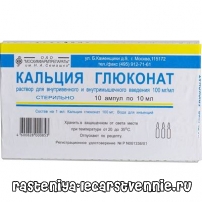
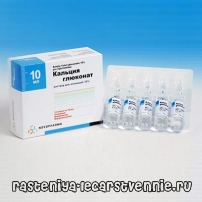 Now we will talk about such a pharmaceutical agent as Calcium Gluconate (injections), - application, indications for its use, contraindications, we will further consider in more detail.
Now we will talk about such a pharmaceutical agent as Calcium Gluconate (injections), - application, indications for its use, contraindications, we will further consider in more detail.
So, this is a drug used parenterally, that is, it is injected as a solution into the muscle, and is also used intravenously, it is available in ampoules of 10 milliliters.
The solution should be stored in accordance with the conditions that are detailed on the packaging with the pharmaceutical product, in addition, it is contraindicated to use the medication after its expiration date. The use of the drug allows you to replenish the calcium deficiency in the body, this mineral compound is necessary for the full transmission of nerve impulses.
In addition, the calcium present in this pharmaceutical preparation is involved in the contraction of skeletal muscles, as well as smooth muscles, it takes an active part in the activity of the heart muscle of the so-called myocardium, as well as in the biochemical process of blood coagulation.
Calcium also takes part in the formation of the structure of bone tissue, otherwise, with a deficiency of this important component, the bones become more brittle, which can cause more frequent fractures.
The drug Calcium gluconate has the following pharmacological actions: anti-inflammatory, anti-allergic, as well as hemostatic (hemostatic), in addition, a moderate diuretic effect.
Calcium gluconate - application
Calcium gluconate is used parenterally, that is, it is injected intramuscularly, in particular into the gluteal muscle, as well as intravenously. Usually, a single dosage of a pharmaceutical product corresponds to 2.25-4.5 mmol of calcium.
It is recommended to administer the solution intravenously by jet slowly, while the injection is carried out for two, three minutes both into the vein and intramuscularly, or the procedure is carried out by drip method. Adults are recommended to prescribe 10 milliliters of pharmaceuticals every day, or the injection is carried out after one or two days.
For children, the dosage of this pharmaceutical preparation Calcium gluconate is from 1 to 5 milliliters and the drug is also administered quite slowly every two or three days after a preliminary consultation with the doctor.
The injection should be carried out carefully, since during extravasation (puncture) of the vein, the so-called necrosis (necrosis) of soft tissues may occur, in such a situation, the patient should be provided with appropriate and urgent medical care.
If the patient has laboratory-insignificant hypercalciuria, as well as nephrourolithiasis or a decrease in the so-called glomerular filtration, then the use of the drug is recommended under constant monitoring of the amount of calcium in the urine. This will control the proper absorption of calcium in the human body.
It is worth noting that in order to reduce the risk of developing the so-called nephrourolithiasis (urolithiasis) in a patient, it is recommended that the patient consume plenty of fluid without fail in order to prevent the deposition of stones in the urinary tract and kidneys.
Calcium gluconate, when used simultaneously, may reduce the effectiveness of drugs from the group of calcium channel blockers. Cholestyramine reduces the absorption of calcium. When combined with quinidine, there is a slight slowdown in intraventricular conduction.
During the treatment of a patient with drugs from the group of cardiac glycosides, the use of calcium gluconate injections is not recommended, since cardiotoxic effects may increase.
What are the indications for calcium gluconate?
I will list when calcium gluconate injections are indicated for use:
Lack of calcium in the body;
With eclampsia of pregnant women;
In the presence of hypoparathyroidism;
Use injections of the drug in case of parenchymal hepatitis;
With some skin diseases;
With toxic damage to the liver tissue;
Effective medicine for nephritis;
A medication is prescribed for paroxysmal myoplegia, which occurs in a hyperkalemic form;
The drug is effective as an antidote for poisoning with oxalic acid, as well as magnesium salts;
If the patient has exudative-inflammatory processes.
As an additional pharmaceutical agent, calcium gluconate is prescribed for certain allergic diseases. In addition, as a hemostatic medication, if the patient has bleeding: pulmonary, as well as nasal, gastrointestinal, uterine.
What are the contraindications for calcium gluconate?
There are some contraindications to the use of the pharmaceutical preparation Calcium Gluconate, the instructions for their use are:
Do not prescribe injections of this medication for laboratory-confirmed hypercalcemia;
The use of pharmaceuticals is contraindicated in severe hypercalciuria;
Do not use the medicine for severe renal failure;
With increased sensitivity to the components of the drug.
In addition, this pharmaceutical preparation is not prescribed to persons with a tendency to form thrombosis.
Conclusion
It is recommended to use Calcium Gluconate in accordance with the above indications for the use of the drug, as well as strictly prescribed and under the supervision of a treating specialist. It is also important to control the absorption of calcium and the exchange of calcium and phosphorus in the human body.
Be healthy!
Tatyana, www.rasteniya-lecarstvennie.ru
Google
www.rasteniya-drugsvennie.ru
Calcium gluconate for allergies: how the drug is used
A sufficient level of calcium in the blood serum and tissues of the body guarantees a low permeability of the walls of small-caliber blood vessels - this prevents the penetration of potential allergens into the circulatory system.
Even after a substance that provokes a reaction has entered, it cannot be absorbed into the bloodstream and come into contact there with its cells responsible for the development of acute allergies. In this case, calcium gluconate, which contains not only calcium, but also a compound that has a direct effect on the state of the connective tissue (gluconate), helps to accelerate the patient's recovery process.
In the vast majority of cases, for the treatment of allergic reactions, the doctor prescribes calcium gluconate with antihistamines (the choice of a specific drug is up to the doctor).
This drug is recommended to be used as part of the complex therapy of various allergic reactions - these include even those that develop in response to the ingestion of chemical compounds used as medicines.
Studies have shown that calcium gluconate remains the optimal means of treating and preventing allergies, but is inactive for preventing or eliminating the symptoms of osteoporosis that develops against the background of age-related and hormonal changes.
There are several regimens for taking the drug. In the vast majority of cases, this drug must be taken orally in the form of tablets or intramuscularly in the form of injections:
- adult patients - 3-6 tablets (single dose ranges from 1 to 3 grams) two or three times a day;
- children aged three to four years receive 1 gram of the drug per reception (2 grams per day);
- children aged five to six years - 1.5 grams per dose (3 grams per day);
- children aged seven to nine years - 2 grams per dose (6 grams per day);
- children aged ten to fourteen years - 3 g per reception (9 grams per day);
- elderly patients (over 60 years old) - no more than 2 grams per day.
There are situations in which the doctor may recommend the administration of the drug in the form of injections (“hot” injections), but such manipulations are not always satisfactorily tolerated by patients due to the appearance of a sensation of heat, hot flashes.
It should also be remembered that if the technique of administering the drug is violated and even a small amount of the active substance enters the subcutaneous tissue, inflammation of the machine tools of the vein and tissues located around the vessel may develop.
If an infection enters the injection site, abscesses may develop, requiring persistent and prolonged surgical treatment.
Regardless of the method of treatment, the course of taking the drug should be at least 7 and not more than 16 days.
The most common side effects that occur during treatment with calcium gluconate are signs of overdose and poisoning (pain in the stomach, vomiting, nausea, diarrhea), as well as heart rhythm disturbances.
Treatment with calcium gluconate: myths and reality
Today you can hear more and more often that the use of calcium gluconate for the treatment of allergies does not give the desired result, and it is time to abandon this drug in favor of new and modern medicines.
Of course, you can understand pharmaceutical manufacturers - calcium gluconate has a minimal cost, while modern antihistamines are quite expensive. Other corporations recommend abandoning the drug and giving preference to coral and other "organic calcium preparations", the price of which is many times higher than the cost of gluconate.
Many supporters of organic preparations say that organic calcium is excellently absorbed from the intestinal lumen, which cannot be said about calcium gluconate. This statement has practically no justification, because the absorption of calcium and gluconate is influenced not by auxiliary components in the composition of the drug, but by the state of the body itself, namely:
- the level of parahormones produced by the cells of the parathyroid glands;
- the level of calcitonin secreted by the thyroid gland;
- vitamin D concentration.
For normal absorption of calcium through the wall of the digestive tract (wall of the small intestine), vitamin D, certain amino acids (L-arginine and lysine), and calcium-binding protein are required.
These compounds ensure the normal absorption of calcium by the body, because its passive absorption, which does not directly depend on these substances, occurs only in the duodenum. With a change in metabolism, only a minimal amount of calcium gluconate will enter the body, an insufficient amount of it will also be detected when a person receives insoluble calcium salts with food and water, which have nothing to do with the drug in question.
Calcium gluconate is absorbed by both children and adults, which is why doctors recommend taking this drug if treatment is not contraindicated.
finetips.net
Causes of Allergy
Doctors have long proven that allergies most often first appear in childhood. This is due to the rapid growth of teeth and bone mass and an insufficient amount of calcium in the body. With age, this important element is washed out of the body.
Plus, harmful substances from the external environment are constantly coming in. A lack of calcium leads to increased permeability of the walls of blood vessels, as a result, toxins and allergens enter the body more intensively. Perhaps this is the reason for the use of calcium gluconate in the treatment of allergies.
Calcium gluconate - instructions for use for allergies
When allergies occur, doctors often prescribe calcium gluconate as part of the treatment regimen.
This is a complex drug that does not have a narrow focus - it is prescribed for a wide variety of forms of allergies.
In severe forms of allergies, accompanied by swelling of body parts, calcium gluconate reduces swelling. The advantage of the drug is that calcium gluconate is well absorbed by the walls of the stomach and blood vessels. Thus, the drug quickly enters the bloodstream and produces a therapeutic effect.
It comes in two forms:
1. pills
2. injection
Application and dosage of calcium gluconate
How to take calcium gluconate for allergies?
Calcium gluconate tablets should be taken before meals. The drug can be dissolved in clean cold water.
- Dosage for adults: 1-3 grams (3-6 tablets) two or three times a day.
- Children from 2 to 10 years old should be given 1 g (3 tablets) also two or three times a day. After 10 years, a single dosage is 2 g (4 tablets).
- People of retirement age are not recommended to take more than 2 grams of the drug per day.
Before using the medicine, it is necessary to consult your doctor in order to draw up the exact dosage and time of administration.
A course of treatment is usually two or three weeks.
Intravenous calcium gluconate is administered very slowly. The dosage is about 500 mg and depends on the age and weight of the patient. Injections are best entrusted to a highly qualified nurse. The injection method of administration is used only in emergency cases.
It is better for children to take this drug in tablets.

Side effects of calcium gluconate
Calcium gluconate can cause such side effects when stopping allergic conditions as:
- nausea;
- vomit;
- lowering blood pressure;
- violation of the pulse;
- stool problems (constipation).
Contraindications to the use of calcium gluconate
1. This drug should not be taken if the person suffers from kidney failure or has any kidney problems.
2. Violations in the work of the parathyroid gland can become a refusal to take calcium gluconate. In this case, the drug simply will not be absorbed, it is pointless to take it.
3. Hypercalcemia is another contraindication, because there is an excess of calcium in the body.
4. Atherosclerosis - calcium gluconate can exacerbate this disease.
5. Predisposition to thrombosis is also a contraindication to use.
Compatibility with other medicines
In most cases, the doctor prescribes taking calcium gluconate along with other antiallergic medicines. In this case, the effect of treatment becomes higher and comes faster.
Even calcium gluconate can be used as a prophylactic for allergies even before the onset of an exacerbation of the disease.
Another advantage of this drug is its low price and availability. However, it is necessary to consult a doctor before taking it and take into account contraindications for use.


